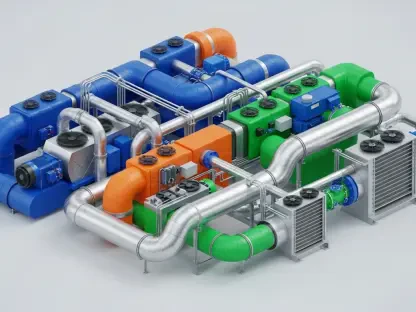Fixed version:
What happens when a nation, surrounded by complex geopolitical challenges, decides to take control of its own security? India is stepping into this bold arena, transforming its defense production landscape by forging powerful alliances with the private sector. This isn’t merely about manufacturing arms; it’s about crafting a future where national sovereignty stands unshaken, even in the face of global uncertainties. The journey toward self-reliance in defense is gaining momentum, promising a redefined approach to security and innovation.
The significance of this shift cannot be overstated. With borders that demand constant vigilance and a world where supply chain disruptions can cripple preparedness, India’s push for indigenous defense capabilities is a strategic imperative. This movement, rooted in the vision of ‘Atmanirbhar Bharat’ or self-reliant India, seeks to minimize dependence on foreign technology and materials. By integrating private players into a historically state-dominated sector, the country is setting the stage for a robust, sustainable defense ecosystem that could serve as a global model.
Why India’s Defense Production Drive Matters
The stakes for India’s defense sector are higher than ever. Geopolitical tensions along its borders and the unpredictability of international alliances highlight the urgent need for a self-sufficient military infrastructure. Relying on external sources for critical equipment or technology during a crisis is a vulnerability that could cost dearly. This drive to boost local production isn’t just a policy choice; it’s a cornerstone of national security in an era where autonomy equates to strength.
Beyond immediate security concerns, this initiative carries economic and strategic weight. By fostering domestic manufacturing, India aims to create jobs, stimulate innovation, and position itself as a potential exporter of defense technology. The collaboration with private entities amplifies these goals, bringing fresh perspectives and agility to a sector often slowed by bureaucratic processes. Such a transformation signals to the world that India is ready to stand as an independent power.
The numbers paint a compelling picture. Recent government reports indicate that defense production in India has seen a steady rise, with private sector contributions growing significantly over the past few years. This trend underscores a shift from traditional reliance on public sector units to a more dynamic, inclusive model. As partnerships deepen, the potential for groundbreaking advancements in defense technology becomes increasingly tangible.
The Critical Need for Self-Reliance in Defense
In a landscape marked by rapid technological change, dependence on foreign defense supplies poses a glaring risk. A single disruption in global supply chains could halt critical operations, leaving India exposed at a pivotal moment. The concept of self-reliance, therefore, transcends rhetoric—it’s about ensuring that the nation can sustain itself through prolonged conflicts without external crutches.
This urgency is particularly pronounced given the adversarial challenges at India’s borders. Developing indigenous capabilities in manufacturing, design, and technology isn’t a luxury but a necessity to maintain control over essential defense components. The focus on homegrown solutions aims to build resilience, ensuring that strategic decisions aren’t dictated by foreign availability or political pressures.
Government initiatives reflect this priority with clarity. Policies under the self-reliance framework are designed to reduce imports while scaling up local production capacities. By incentivizing innovation and setting ambitious targets for indigenous content in defense equipment, India is laying the groundwork for a future where its military strength is built from within, ready to face any challenge.
Strategies Fueling Private Sector Integration
India’s blueprint for enhancing defense production rests on a strategic embrace of private sector expertise. One key approach is establishing a level playing field between public and private entities in both revenue and capital procurement. This move is intended to dismantle historical barriers, encouraging competition and sparking innovation across the board.
Another pillar of this strategy involves policy flexibility and openness to input. The government actively seeks suggestions from private players to refine regulations, making collaboration smoother and more effective. This inclusive stance ensures that policies evolve in tandem with industry needs, creating an environment where private contributions can truly flourish.
Lastly, there’s a strong emphasis on building indigenous capabilities from the ground up. Whether it’s designing cutting-edge systems or securing supply chains, the focus remains on controlling every aspect of defense production domestically. Real-world examples, such as joint ventures between private firms and government bodies for missile systems and naval equipment, highlight how these strategies are translating into tangible outcomes, strengthening India’s defense framework.
Leadership Perspectives on Collaboration and Independence
Insights from top officials provide a clear window into the government’s commitment to this transformative journey. Defense Production Secretary Sanjeev Kumar, speaking at a recent global summit, emphasized a resolute stance on promoting the defense industry through private partnerships. “The goal is to foster an ecosystem where private entities play a pivotal role, and meaningful suggestions for policy enhancement are always welcome,” he noted, reflecting a dedication to dialogue and improvement.
Kumar also offered a compelling definition of self-reliance: the ability to sustain a conflict without leaning on foreign support. This vision hinges on mastering technology and materials internally, a point he stressed as non-negotiable for long-term security. While acknowledging short-term dependencies on external components, his focus remained on achieving full autonomy over time, a perspective that aligns with industry expectations.
This balance between immediate realities and future aspirations resonates deeply with stakeholders. Kumar’s candidness about current challenges, paired with an unwavering commitment to independence, paints a picture of pragmatic leadership. His words serve as both a reassurance and a challenge to the private sector to step up and contribute to a self-sufficient defense landscape.
Actionable Pathways to a Self-Reliant Defense Sector
Turning the vision of a self-reliant defense industry into reality requires concrete, actionable steps. Private companies are encouraged to prioritize investment in research and development, focusing on innovative technologies that can redefine defense capabilities. This aligns with the government’s call to value long-term capability building over short-term financial gains, setting a foundation for sustainable progress.
Engagement with policymakers forms another critical pathway. By providing actionable feedback and suggestions, private entities can help shape regulations that facilitate smoother integration into the defense sector. Such collaboration ensures that the unique strengths of private players are harnessed effectively, addressing gaps in the current framework.
Finally, a shift in mindset toward enduring goals is essential. Building indigenous solutions for manufacturing and supply chains demands patience and persistence, but it’s a cornerstone of true independence. For industry players and observers alike, these steps offer a clear roadmap to align with India’s ambitious vision, ensuring that the defense sector is equipped to handle future uncertainties with confidence.
Reflecting on the Journey and Looking Ahead
Looking back, India’s efforts to revolutionize its defense production through private sector partnerships marked a pivotal chapter in its quest for security. The strides made in policy reform, industry collaboration, and indigenous innovation laid a strong foundation for what was to come. Each step, from leveling the competitive field to embracing technological autonomy, reflected a nation determined to safeguard its sovereignty.
The path forward demanded continued momentum. Strengthening investments in cutting-edge research, fostering deeper public-private synergies, and scaling up local manufacturing were identified as critical next steps. These actions promised not only to fortify national defense but also to position India as a leader in global defense innovation.
As challenges evolved, so too did the need for adaptive strategies. Encouraging smaller enterprises to join the defense ecosystem and leveraging digital tools for efficiency emerged as vital considerations. These efforts, grounded in the lessons of the past, aimed to ensure that India’s defense sector remained resilient, independent, and ready for any test the future might bring.









